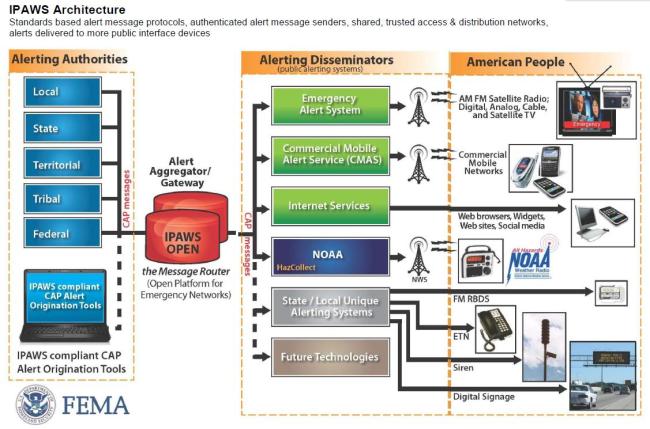I have had many conversations lately with both application developers as well as public safety alert originators regarding IPAWS. In nearly every conversation one misconception shines through. Practitioners and developers alike are considering IPAWS to simply be a tool for launching Wireless Emergency Alerts (formally known as CMAS). While IPAWS certainly does provide the sole point of entry for WEA, it is so much more than that and is very much being undersold.
So, have you hesitated to implement IPAWS because you view it simply as a WEA tool and aren’t sure that you want to implement WEA yet? Here are some reasons to think otherwise:
- IPAWS provides the sole entry path into the National Weather Service’s NOAA Weather Radio for the issuance of Non-Weather Emergency Messages. While practitioners frequently push the value of these radios to the public for weather warnings, participating in IPAWS allows that agency’s emergency messages to also activate these tone alert radios.
- IPAWS provides an internet based path to broadcasters providing a redundant interface into the legacy Emergency Alert System. For some alert originators this connectivity could provide a more reliable and robust means of alerting than current practices however even those areas that have adopted robust and redundant systems such as Communications Laboratories’ EMnet system could benefit from the redundancy.
- The key to IPAWS is that it is a message broker for structured data. Many tools focus on creating messages to send to IPAWS however very few at this point leverage data from IPAWS to activate other warning systems. While nearly no one has has capitalized on this yet, it allows a single activation message to trigger multiple systems. For example a siren manufacturer could implement an encoder that monitors the IPAWS server to activate based on specific event codes within the geographic area of the siren. Similarly a telephone based emergency notification system could deliver an audio message attached to an IPAWS alert to the alert polygon defined within that IPAWS alert.
One thing is for sure about IPAWS, it still has a long way to go in terms of vendors realizing its capabilities and alerting authorities to require full compliance within their Alert & Notification System RFPs. Educating yourself on the full capability of IPAWS is something that both groups must do NOW. 